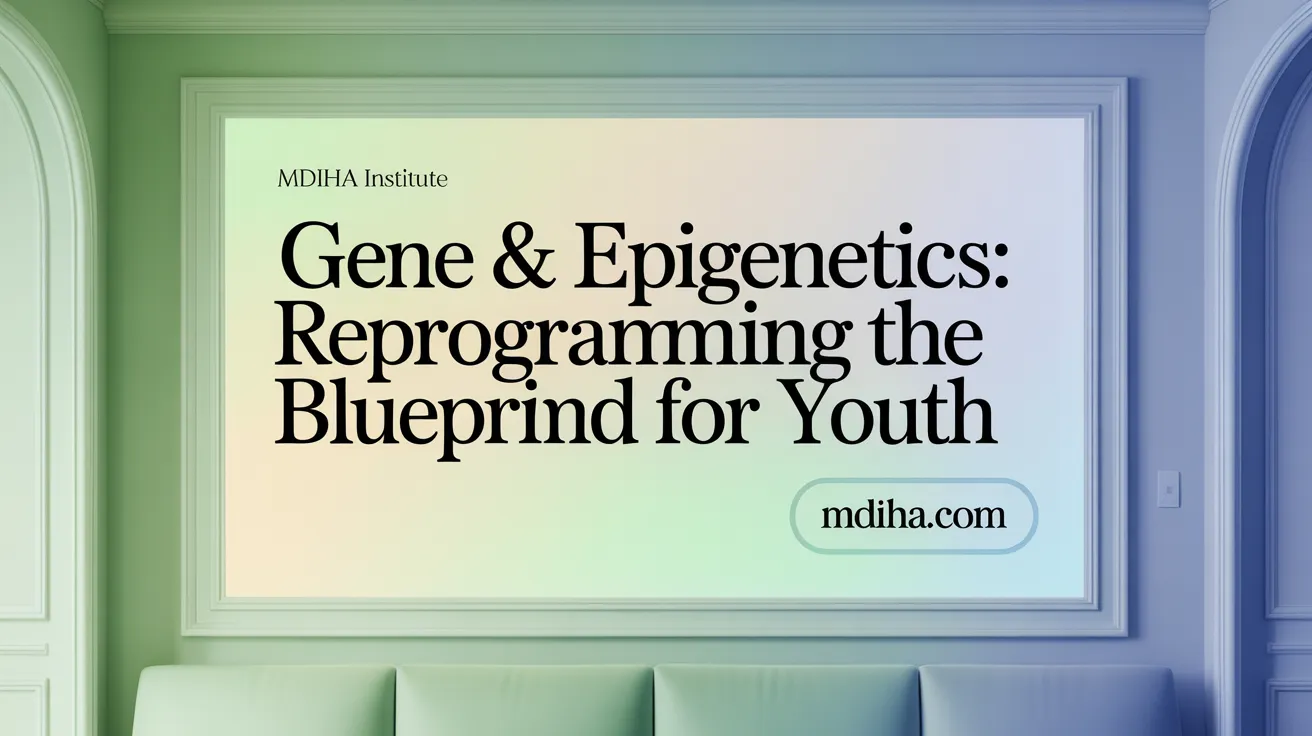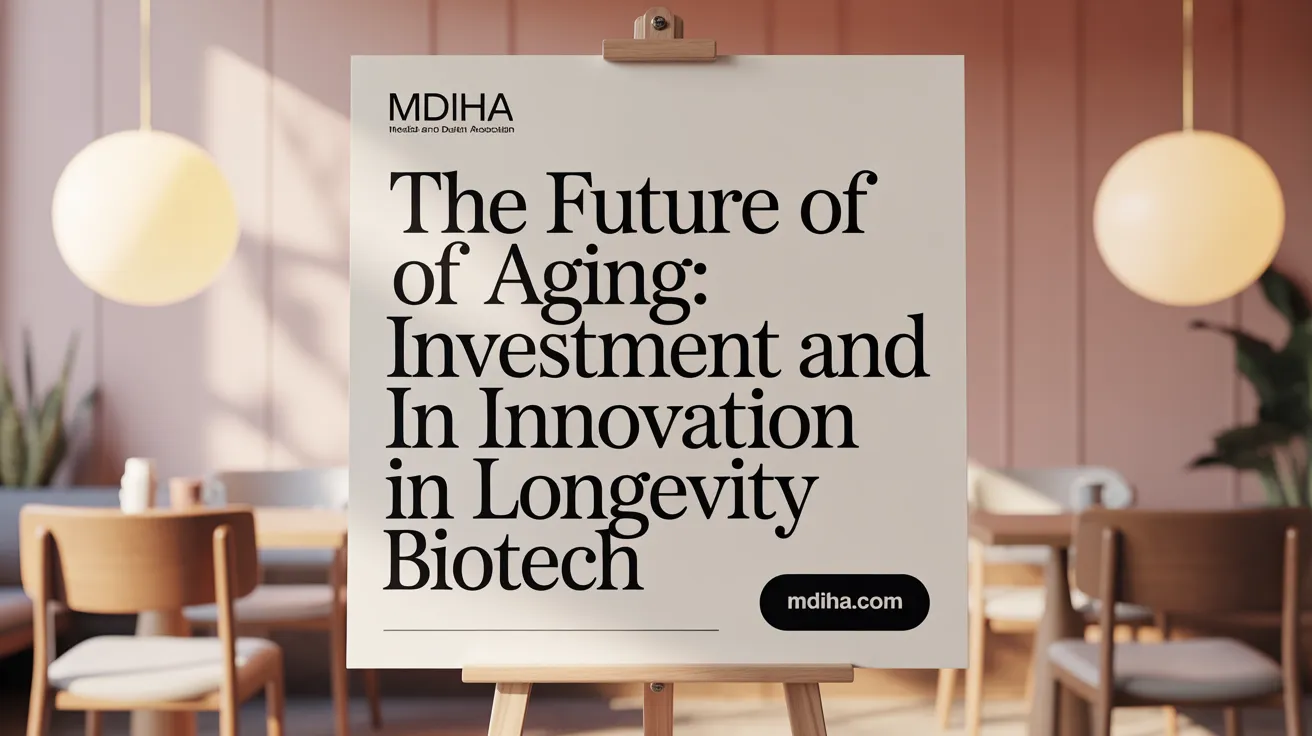A New Era in Longevity: Beyond Science Fiction to Tangible Therapies
Recent advancements in biotechnology, regenerative medicine, and personalized diagnostics are reshaping how we understand and approach human longevity. While extending lifespan has long been constrained by biological limits, cutting-edge therapies now focus on increasing healthspan – the years of life lived in optimal health – by targeting the fundamental mechanisms of aging. This article explores innovative treatments from stem cell therapies to gene editing, and how they collectively redefine the landscape of anti-aging medicine in 2025.
Stem Cell and Regenerative Therapies: Harnessing the Body’s Repair Potential
What are the roles of stem cell and exosome therapies in boosting longevity?
Stem cell therapy uses regenerative cells, especially mesenchymal stem cells (MSCs), to repair and replace damaged tissues. MSCs are versatile; they can differentiate into bone, cartilage, muscle, and fat cells. Their anti-inflammatory properties also help slow aging processes by reducing tissue damage.
How do mesenchymal stem cells contribute to regeneration?
MSCs contribute to tissue regeneration by activating repair mechanisms and promoting dermal thickness. Their ability to transform into multiple cell types aids in healing various tissues. These cells support skin rejuvenation and organ function improvement, highlighting their regenerative powers.
What is exosome therapy and how does it work?
Exosome therapy involves using extracellular vesicles secreted by stem cells to improve intercellular communication. These vesicles carry proteins and genetic material that stimulate tissue repair, reduce inflammation, and enhance skin texture and elasticity. They represent a cell-free regenerative approach with promising anti-aging benefits.
What clinical advances support these therapies?
Clinical studies and trials focus on stem cell and exosome therapies for treating age-related conditions such as neurodegenerative diseases, skin aging, and organ degeneration. Research emphasizes their safety and effectiveness, with therapies advancing towards becoming mainstream regenerative treatments.
These regenerative therapies together represent a frontier in longevity medicine by restoring cellular function and promoting healthy aging, supported by ongoing scientific progress and clinical exploration.
Genetic and Epigenetic Interventions: Editing the Blueprint of Aging

How do gene editing and epigenetic reprogramming technologies contribute to anti-aging?
Gene therapy leverages precise tools like CRISPR-Cas9 to insert, modify, or remove specific genes, directly targeting the biological mechanisms behind cellular aging. By focusing on genes linked to longevity and DNA repair, such as FOXO3 and SIRT variants, this technology helps maintain genome integrity and boost immune functions, which tend to decline with age.
Epigenetic reprogramming takes a complementary approach by resetting age-related chemical modifications on DNA — effectively turning back the cellular clock to restore youthful functions. This strategy has shown promising results in animal studies, extending lifespan and rejuvenating tissues by reactivating key regenerative pathways.
Telomere extension is another genetic intervention that elongates the protective caps at chromosome ends. By maintaining telomere length through activating telomerase enzymes, cells can avoid senescence and continue dividing healthily, potentially delaying many age-associated deteriorations.
Several biotech companies are pioneering these cutting-edge therapies. Altos Labs, backed by billions in funding, focuses on partial epigenetic reprogramming to extend lifespan in animal models. Clock.bio has decoded rejuvenation genes across the human genome and creates models to reverse cellular aging. Genflow Biosciences explores gene therapy to deliver beneficial gene variants like SIRT6 in preclinical development, while Juvenescence advances small molecule and gene therapies against age-related ailments.
The convergence of gene editing, epigenetic resetting, and telomere maintenance represents a powerful toolkit for next-generation longevity medicine, with multiple companies developing AI-driven platforms to accelerate discovery and personalize anti-aging interventions.
Pharmacological Advances: Senolytics, NAD+ Boosters, and Novel Drug Candidates
Which pharmaceutical approaches show promise in extending lifespan and improving healthspan?
Pharmaceutical research in longevity has identified several promising drug classes and candidates aimed at extending both lifespan and healthspan.
Senolytic Drugs: These are designed to selectively target and eliminate senescent cells—cells that no longer divide and contribute to chronic inflammation and tissue degradation. By removing these cells, senolytics can reduce age-related tissue dysfunction. Candidates such as dasatinib and quercetin are currently under investigation for their effectiveness in this role.
NAD+ Therapy: Nicotinamide adenine dinucleotide (NAD+) is a vital coenzyme that supports cellular energy production and DNA repair. NAD+ levels naturally decline with age, contributing to decreased cell vitality. NAD+ boosters, including intravenous formulations, have shown promise in restoring cellular energy metabolism and activating longevity-associated proteins like sirtuins.
Repurposed Drugs: Several medications already approved for other uses demonstrate potential anti-aging effects. Rapamycin inhibits the mTOR pathway, which regulates cell growth and metabolism, thereby slowing aging processes. Metformin, commonly used for diabetes, reduces oxidative stress and inflammation. Mifepristone, traditionally employed for reproductive and cancer treatments, has extended lifespan in fruit fly models by enhancing mitophagy—the process that recycles damaged mitochondria, highlighting mitochondrial health as a key intervention point.
Emerging Pharmaceuticals: The longevity field continues to explore additional compounds targeting molecular pathways of aging, such as caloric restriction mimetics and gene therapy agents. These are often integrated with other therapies in personalized anti-aging regimens.
These pharmacological strategies collectively contribute to a growing armamentarium aiming to delay aging and improve the quality of life in aging populations.
Psychedelic Compounds and Emerging Neuroprotective Therapies
What is the significance of psilocybin in longevity research?
Psilocybin delays aging, particularly through its active metabolite psilocin, has emerged as a promising compound in anti-aging studies. Research has demonstrated that psilocin extends the lifespan of human cells by approximately 29% to 57%. It delays the onset of cellular senescence, a key factor in aging, and reduces oxidative stress, which damages cells over time.
How does psilocybin affect aging mechanisms?
Psilocybin supports DNA repair processes and preserves telomere length, the protective caps on chromosomes that naturally shorten with age. Preservation of telomeres is crucial as their shortening is linked to many age-related diseases. By activating serotonin receptors found throughout the body, psilocybin may influence several aging pathways, impacting both systemic and neurological health.
What longevity benefits have been observed in animal studies?
In vivo studies on aged mice reveal that psilocybin-treated animals show a 30% or greater increase in survival rates compared to untreated controls. These mice also display improved physical health signs, such as enhanced fur quality and hair regrowth, indicating functional anti-aging effects. This suggests potential for improving lifespan and healthspan through psychedelic-based therapies.
What are the potential applications of psilocybin beyond neuroprotection?
Beyond its neurological benefits, psilocybin’s action on serotonin receptors in multiple tissues points to wider systemic anti-aging applications. Current findings encourage exploration of psilocybin for treating age-related decline throughout the body, not just the brain. However, comprehensive clinical trials are needed to optimize treatment protocols and confirm its safety and efficacy in humans.
Advanced Diagnostics and Personalized Longevity Medicine
How do advanced diagnostics support personalized longevity interventions?
Advanced diagnostics form the foundation of personalized longevity medicine by providing a thorough understanding of an individual's unique biological makeup and aging process. Comprehensive biomarker panels assess over 350 indicators, spanning metabolic health, hormone levels, inflammatory markers, and genetic information. This extensive testing paints a detailed picture of biological age and disease risk, allowing for precision targeting in treatment.
Brain imaging technologies such as the WAVi brain scan benefits identify early metabolic and functional changes associated with neurodegenerative diseases like Alzheimer's and Parkinson's. Detecting these issues early enables proactive measures to slow or prevent progression.
Hormone and metabolic profiling uncovers imbalances in key regulators such as thyroid hormones, cortisol, estrogen, and testosterone, which influence energy, mood, weight, and overall metabolism. Addressing these imbalances through tailored therapies supports rejuvenation and vitality.
Additional tests like stool analysis examine gut microbiota composition, often linked to systemic inflammation and immune function. Guidance on dietary and probiotic interventions can restore beneficial bacteria balance, further optimizing health.
Together, this diagnostic insight empowers clinicians to develop highly individualized treatment plans that may include regenerative therapies (such as stem cell therapy, exosome therapy, peptide therapies, NAD+ infusions, lifestyle and nutritional adjustments, and targeted pharmacological support. This approach aims not just to extend lifespan but importantly, to enhance healthspan by maintaining functionality and resilience as individuals age.
Innovations in Skin and Soft Tissue Rejuvenation

Stem cell and exosome therapies for skin
Stem cell therapy, particularly with mesenchymal stem cells, promotes the production of collagen and elastin, essential proteins for skin elasticity and structure. These therapies activate regenerative processes at the cellular level, helping improve dermal thickness and reduce wrinkles. Exosome therapy complements this by enhancing intercellular communication, which aids tissue repair and rejuvenation, resulting in improved skin texture and elasticity.
Peptide therapy and collagen stimulation
Peptide therapy utilizes short chains of amino acids to stimulate collagen production. This not only boosts skin firmness but also enhances metabolic functions and cognitive health. By promoting collagen synthesis, peptides improve skin elasticity and combat early signs of aging.
Non-invasive modalities like radiofrequency, microneedling, and LED light therapy
Non-invasive treatments are increasingly popular due to minimal downtime and effective results. Morpheus8, for instance, combines radiofrequency with microneedling to stimulate collagen production, tighten the skin, and reduce wrinkles. LED light therapy uses specific wavelengths to promote collagen synthesis and decrease inflammation, while other technologies like ultrasound and microcurrent therapy tone muscles and enhance skin contours.
Cutting-edge regenerative and genetic approaches
Advances in gene editing, including CRISPR technology, offer promising future interventions targeting genes related to DNA repair, cellular senescence, and collagen production. Telomere extension therapies aim to delay cell aging by lengthening chromosome endcaps. Alongside these, emerging biologics and nanotechnology-based delivery systems enable deeper skin penetration of active ingredients, fostering comprehensive tissue regeneration.
Integrated treatments for skin rejuvenation
Many contemporary approaches combine regenerative therapies such as platelet-rich plasma (PRP) and fibroblast activation with stem cell and exosome treatments. This integrative method promotes collagen production, angiogenesis, and tissue remodeling, embodying a holistic strategy to aesthetic longevity and skin health.
Lifestyle, Nutrition, and Holistic Approaches in Longevity

How do lifestyle and holistic approaches complement medical longevity treatments?
Longevity is not solely about medical interventions; lifestyle and holistic practices play a vital role in extending healthspan and supporting anti-aging efforts. A balanced diet rich in antioxidants nourishes the body, reducing oxidative damage at the cellular level. Regular exercise stimulates mitochondrial efficiency, boosts metabolism, and encourages tissue regeneration.
Stress management techniques, alongside quality sleep, regulate hormonal balance and lower chronic inflammation, both critical factors influencing the aging process. Caloric restriction and fasting mimetics activate longevity pathways such as sirtuins and mTOR, which are molecular mechanisms linked to slowed biological aging.
Environmental detoxification is crucial; eliminating or reducing exposure to toxins, including microplastics and endocrine disruptors, supports cellular resilience. Nutrient and genetic testing guide personalized detox strategies that optimize genetic repair pathways.
When combined with advanced diagnostics, regenerative therapies like stem cell therapy, peptide therapy, and personalized medical treatments, these lifestyle factors create a comprehensive, integrative approach to longevity. This combination maximizes the potential for improved vitality, slows degenerative changes, and enhances overall well-being, ultimately extending both lifespan and quality of life.
The Current Biological Limits and Future Prospects for Lifespan Extension

What are the current limits to human lifespan and how might future research overcome them?
Scientific evidence indicates that human life expectancy is approaching a biological ceiling. Empirical data estimate the maximum human lifespan to be around 122 years, with the average life expectancy plateauing near 85 years globally. This ceiling stems from intrinsic biological aging processes that have so far resisted significant extension despite medical and public health advances (Life expectancy limits this century, Global life expectancy increase).
Distinguishing lifespan from healthspan
While lifespan measures total years lived, healthspan refers to the years lived in good health without chronic diseases or disabilities. Most current medical successes have focused on prolonging healthspan by delaying the onset of age-related diseases rather than extending maximum lifespan. Current interventions have thus compressed morbidity and improved quality of life for aging populations without significantly pushing lifespan boundaries (extension of health span, Longevity medicine overview).
Research aiming beyond current limits
Geroscience, the study of biological aging mechanisms, seeks to modulate aging at the molecular and cellular levels. Emerging experimental strategies include cellular reprogramming, which aims to reset cells to a more youthful state, senolytic treatments that clear harmful senescent cells, and regenerative medicine techniques like stem cell therapy and gene editing. These approaches target fundamental aging pathways such as DNA repair, telomere maintenance, and inflammatory processes (Gene therapy and aging, Stem cell therapy benefits).
Looking ahead: moonshot projects and multidisciplinary innovation
Although these therapies remain mostly experimental, the integration of biology, artificial intelligence, and biotechnology fosters optimism. Multidisciplinary efforts and novel technologies aspire to transform longevity science, potentially allowing humans to significantly extend both lifespan and healthspan in the future (Advances in genetics and medicine, Longevity medicine field growth). Such breakthroughs will require continued research investment and careful translation from model organisms to human applications (Scientists extend lifespan by over 70% in elderly male mice).
The Biotech Longevity Industry: Investment and Innovation Landscape

How is the biotech industry advancing the development of longevity therapies?
The biotech sector focused on longevity is experiencing rapid expansion, with investments exceeding $8 billion as of 2024. This surge is driven by growing consumer demand for therapies that address aging at its biological root. Market forecasts predict a continued increase, with the anti-aging biotech market expected to nearly double in value by 2032.
Leading companies are pioneering innovative approaches to extend healthy lifespan. Altos Labs stands out with $3 billion in funding, demonstrating that epigenetic reprogramming can extend life in animal models. Juvenescence specializes in small molecules and gene therapies targeting age-related diseases, progressing several candidates to clinical trials. Rejuvenate Bio focuses on gene therapies for cardiac and metabolic conditions, driving pipelines into regulatory stages.
Artificial intelligence (AI) and machine learning tools underpin many breakthroughs in this arena. Firms like Rubedo Life Sciences and Shift Bioscience leverage AI to discover new senolytic drugs that eliminate aging cells and identify genes capable of rejuvenating cells safely. Clock.bio uses genomic data coupled with machine learning to model and induce cellular rejuvenation, accelerating preclinical development.
Emerging therapies include partial epigenetic reprogramming, gene editing (e.g., CRISPR gene editing based delivery of longevity-associated genes), siRNA therapeutics, and engineered extracellular vesicles for tissue repair. Clinical development covers a broad range of age-related conditions such as cardiovascular disease, neurodegeneration, diabetes, and dermatological aging. This integration of biotech innovation and AI-driven drug discovery places the longevity industry at the forefront of personalized anti-aging treatments and effective anti-aging medicine.
Towards a Longer, Healthier Future: The Promise and Challenges Ahead
The pursuit of extended human longevity is rapidly evolving from speculative aspiration to an interdisciplinary scientific endeavor grounded in cutting-edge therapies. Stem cell regeneration, gene editing, pharmacological innovations, and personalized diagnostics are converging to redefine aging and healthspan management. However, biological limits persist, and ethical, safety, and accessibility challenges remain to be addressed. As research advances and technologies mature, a future of prolonged vitality and disease-free aging appears increasingly attainable, underscoring the importance of holistic lifestyles complemented by medical innovation. The longevity revolution is not merely about living longer but about sustaining quality of life through precision medicine and integrative care.
